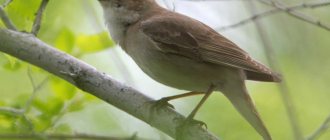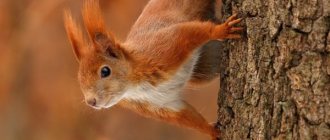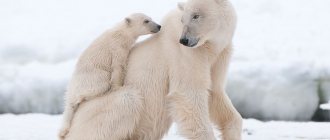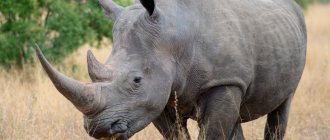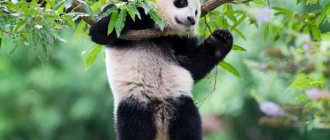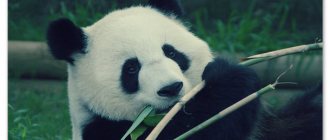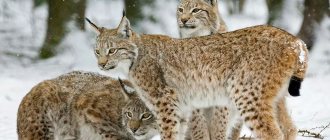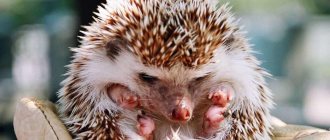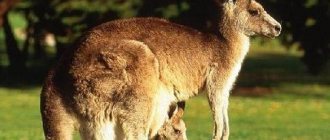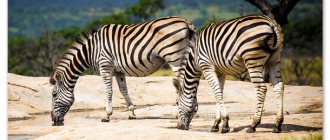If you don't know what Logan's (Hugh Jackman) nickname means in the X-Men series, then you should get to know the character in our story today - Wolverine.
Wolverine is one of the largest representatives of the mustelid family (Mustelidae). This powerful animal looks like a small bear with a bushy tail, short legs and large paws. Despite its inconspicuous size, the wolverine is a very aggressive predator that can take prey even from a wolf, fox and bear.
This animal is extremely brave, and its fearlessness is usually compared to the honey badger, which is called the bravest animal in the world.
Geographical distribution
Photo: Hans Veth
Wolverines live mainly in isolated arctic and boreal zones of northern Alaska, Canada, Siberia and Scandinavia (Norway, Sweden, Finland). They are also found in Russia (in the European and eastern parts of the country) up to 50 degrees north latitude, the Baltic countries (Estonia, Latvia, Lithuania), Mongolia and northeastern China. Wolverines have also been spotted in small numbers in the Rocky Mountains.
They require large areas of relatively undisturbed northern habitat. Although historically wolverines lived in more southern regions of Europe and North America, these populations were exterminated mainly as a result of overhunting, deforestation and other human activities. Their habitat once extended as far south as Colorado, Indiana, and Pennsylvania.
Natural habitat
Wolverines are found in alpine forests, tundra, open grasslands, and transition zones at the forest edge. Sometimes they can be found in swamps. However, they avoid water , although they are very good swimmers.
Photo: Xavier Rufray
Typically, wolverines live in areas with low levels of human presence and require large, undisturbed areas. These carnivorous mammals live exclusively in areas with cold climates, which may be due to their dependence on large animal prey. Cold weather helps preserve meat for later use.
Varieties
There are two subspecies of wolverine:
- North American wolverines (Gulo gulo luscus);
- Eurasian wolverines (Gulo gulo gulo).
The differences between them appear to be largely genetic and are likely a result of the isolation of these two continental populations.
There is another possible subspecies found on Vancouver Island, Canada: Gulo gulo vancouverensis. This population has differences in skull morphology from those found on the mainland, but their status remains to be determined.
physical characteristics
Wolverine is a very stocky and muscular animal. Only the giant otters that live in the Amazon Valley and sea otters are larger in size than this member of the mustelid family.
Appearance
Photo: ichuck
The wolverine has short powerful limbs, a thick rounded neck, small round ears and small eyes. Although the animal's limbs are not very long, its large five-toed paws make it easier to move through deep snow. The weight of the animal primarily falls on the metatarsals, so it does not sag on loose snow. So in the snow, this predator is more likely to catch large animals that get stuck in deep snow. But on hard ground, ungulates can easily outrun a wolverine.
Coloring
The wolverine has thick, dark, oily fur that is highly hydrophobic, making it resistant to frost . This was the reason for its traditional popularity among hunters, who used wolverine fur as a lining for jackets. Wolverines typically have tan or brownish-black fur with a yellow or gold stripe running from the top of the head along the sides of each shoulder and to the rump where the stripes meet at the tail.
Like other stoats, wolverines have powerful anal scent glands used to mark territory and provide sexual signals. Because of its strong odor, the wolverine has earned the nickname "nasty cat" and is often compared to a skunk.
Dimensions
Photo: Paul Cools
These terrestrial mammals are characterized by sexual dimorphism. Male wolverines are 10-30% larger than females in linear dimensions and can even be twice as heavy as them.
- Body length: from 65 to 107 cm
- Shoulder height: from 30 to 45 cm
- Tail length: 17 to 26 cm
- Weight: from 9 to 25 kg, males can weigh up to 32 kg
Description, appearance of wolverine
Both the family and the subfamily, which includes the predator, are called the same - “mustelids”. Only the sea otter is larger than the wolverine (among its close relatives). In size, the wolverine resembles a large dog; in appearance, it resembles a badger or a bear with a fluffy, moderately long (18-23 cm) tail. An adult animal grows to 70-85 cm with a weight of 10-14 kg (female) and 13-17 kg (male). The largest specimens can pull 20 kg.
On the large head, neat rounded ears are noticeable, and the muzzle resembles that of a bear . The eyes, like the nose, are black. The squat, dense body is set on short, thick limbs, with the front ones being shorter than the rear ones, visually raising the back of the body, which is why it appears slightly hunched over.
Wolverine is distinguished by its huge five-toed, almost square feet (10 cm length, 9 cm width): such a “sole”, reinforced with hooked claws, helps the animal easily overcome deep snowy areas. When moving, the plantigrade predator clearly has a clubfoot, as it places its paw resting on the entire foot.
Summer fur is too short to add charm to the wolverine, hiding its disproportionately large skull and legs: at this time of year it looks especially ridiculous. The wolverine becomes prettier in the cold, growing a thick coat of dark brown/black coloring, diluted with a wide, lighter stripe on the sides.
This is interesting! The shaggy coat hides strong bones. There is one more feature that makes it similar to the bear: like him, the wolverine only seems clumsy. She easily controls her strong body, demonstrating lightning-fast reactions to her opponent.
Lifestyle and perception
Wolverines are nocturnal, but can be active during the day. In areas with long periods of light or darkness, animals alternate three to four hour periods of activity and sleep. Snow does not bother wolverines, and they are active all year round, even in the harshest weather. They are mainly terrestrial and move at a galloping pace .
Photo: Vincent van Zalinge
This animal is very good at climbing trees at great speed, but does not use this skill very often. Just like foxes or wolves, wolverines can trot and make long leaps. When they escape, they can even run 40 kilometers without stopping.
Wolverines have a developed sense of smell and good hearing, but most likely their eyesight is poor. They rarely make loud noises, except for grunts and growls when irritated.
Disproportional paws
Wolverine has a disproportionate body . The head and body are relatively small, but the paws are huge. They are wide, flattened and resemble a large palm. Wolverine feet have large claws and webbed feet. Thanks to this structure of the limbs, the animal can swim well, climb trees and fight even with large predators.
Home range
As a rule, wolverines live alone over a very vast territory, and due to this, battles between relatives occur very rarely. Animals gather together only to mate.
Photo: Pinterest
Wolverines have large habitats. Males have a home range ranging from 600 to 1,000 square kilometers. The habitats of females range from 50 to 350 square kilometers. However, the size of the home range varies seasonally and can cover up to 2,000 square kilometers . Wolverine population densities are low due to their requirement for very large home ranges.
Males and females are territorial and do not tolerate individuals of the same sex. Territories are marked by secretions from the anal scent glands and urine. Wolverines also spray their food caches with scent gland secretions to discourage other animals from raiding them.
Keep to themselves
The territory of residence is divided between male wolverines. Most often, only one male lives in a very large area. He constantly walks around his possessions and places his marks . He lives and hunts in this territory. Other males are not allowed into this area. It is the males who divide the territory; the females can move freely and are not chased away. These wild animals are wary of people; if a person decides to invade their territory, the animal most likely will not get involved in the conflict and will find another habitat.
Eating habits
The wolverine's diet can include anything from small eggs to large ungulates. Their diet depends primarily on the time of year, weather conditions and location. In winter, the predator becomes very aggressive and hunts all mammals, including reindeer, roe deer, wild sheep, moose, deer and red deer.
Animals also readily reclaim carcasses killed by other large predators. Wolverines are extremely strong and aggressive for their size, often fighting off bears, cougars and even packs of wolves from their kills. They even eat the carcasses of whales, walruses and seals.
In summer, the main ingredients in the wolverine's diet are bird eggs, tree branches and blueberries. In autumn, the animal eats a huge number of wasp larvae, small rodents, fish and carrion.
While raising their young, female wolverines typically hunt smaller animals such as rabbits, hares, ground squirrels, marmots, and lemmings. The amount of food available can be key to population size; more food leads to greater reproductive success.
Wolverine nutrition
Wolverine is certainly a predator and can move many tens of kilometers in search of meat. However, in summer it can feed on berries, roots, some plants, insects, snakes and bird eggs.
She also loves honey, fishes, and feasts on small animals (squirrels, hedgehogs, weasels, foxes). But this animal’s favorite food is ungulates. The predator can defeat fairly large animals, such as roe deer, elk, mountain sheep, and deer, but most often attacks young, sick or weakened animals.
Being an excellent hunter, the wolverine ambushes and watches for its prey in a secluded place. The attack of the animal wolverine is sudden, and the attacker makes every effort to fight for food, the victim is torn apart by sharp claws and teeth.
If the prey manages to escape, the predator begins to pursue it. The wolverine does not run very fast, but it has great endurance and simply “wears out” another animal.
In its territory, the animal is mainly located next to grazing ungulates and from time to time moves from one herd to another or follows them. It is very rare to observe wolverines hunting in groups.
Wolverine eats more carrion than any other predator.
If possible, food is taken from another predator: lynx or fox. The wolverine's amazing sense of smell allows it to find and dig up dead fish from under a thick layer of snow and sense the blood of a wounded animal over long distances.
It is generally accepted that the wolf is the chief orderly of the forest, however, this opinion is erroneous. Wolverine destroys more carrion than other forest inhabitants. It feeds on animals that have fallen into traps, corpses and food remains of larger predators.
A predator can eat a large amount of meat at one time, but will not forget to make a reserve. Food buried under the snow or hidden in a secluded place will help you survive in difficult times.
Hunting tactics and nature
Photo: Pinterest
Wolverines have huge jaws and sharp claws. They are extremely brave animals that are not afraid to attack even a larger opponent. Wolverines are capable of killing prey up to five times their own size, but usually only in conditions where large animals become stuck in deep snow.
Wolverines can be very fast in attack, reaching speeds of over 48 km/h . They kill large prey by biting the back or front of the neck, cutting the neck tendons, or crushing the trachea.
Wolverines living in Eurasia are more active hunters than those individuals that live in North America. This is probably due to the fact that the population of predatory animals (that is, potential rivals of the wolverine) is small, and these mustelids have to get food on their own.
In North America, the wolverine may wait for another predator to track its prey and try to take it away. One method is to spray unpleasant gases around the enemy. In most cases, it is wolverines who steal prey from wolves.
Photo: Mark Zekhuis
The scientific name "Gulo gulo" comes from the Latin word for glutton . Wolverines kill when given the opportunity, resulting in them taking more food than they can eat. The wolverine's surplus food is stored in hollows or cracks in the rocks.
Lifestyle
The wolverine is nomadic, unlike its relatives in the family, who settle in one place: it tirelessly scours its vast territory, tracking down (usually at dusk) suitable prey.
On the road, the wolverine does not forget to look where small animals can hide - in hollows, nests, holes, dead wood and snags. It climbs trees without difficulty thanks to its tenacious claws and strong paws.
Wolverine does not like it when individuals of the same sex encroach on its territory, and fiercely defends its autonomy . Temporary shelters for the animal are depressions under uprooted roots, rock crevices and hollows. If there is no shelter nearby, it can spend the night on rocks or snow.
This is interesting! Wolverine is an enviable swimmer. She also has excellent eyesight, good hearing, but not a particularly keen sense of smell.
The wolverine's fearlessness is complemented by its caution: both qualities allow it to walk unnoticed along the paths of humans and large predators in the hope of picking up something edible. Wolverine can walk on any trail, on a snowmobile track and on a ski track.
Speed is not her strong point (a skier or a dog can easily outpace a wolverine), but she has endurance, running on average up to 30 km per day. Runs slightly sideways and skips. There are known cases when wolverines set records for the duration of movements: one covered 70 km without stopping, the second ran 85 km in a day, the third covered 250 kilometers in 2 weeks.
Zoologists believe that on the way, the wolverine does not know the time of day, resting if it feels tired.
Breeding season and young development
Among wolverines, only strong males find partners - usually two or three during the mating season; others live alone. The home ranges of males span the personal territories of several females. Males may mate with every female in their home range, and sometimes with females from overlapping ranges. Males and females stay together for several days.
The mating season is in the summer, but the embryo does not implant immediately , but rather remains in a state of diapause for about 6 months, until late winter. If there is not enough food in the surrounding area, then the females do not produce offspring at all.
In winter, females build nests to store food and shelter the young. They build rough beds of grass or leaves in caves or rock crevices, in burrows made by other animals, or under a fallen tree. Sometimes they build nests in a snow den.
Photo: Andrew Manske
The gestation period lasts from 30 to 50 days. With delayed implantation, pregnancy can last from 120 to 272 days depending on when the embryo is fertilized and when it implants. Between January and April, 2-3 cubs are usually born with an average weight of 85-100 grams. After giving birth, females hide with their cubs. The mother fiercely defends her territory. This territorial behavior continues until the young are ready to hunt on their own.
Juveniles open their eyes four weeks after birth. Weaning is completed at 3 months, and the young begin to obtain food on their own at 5-7 months. They reach adult size at about one year of age, and become sexually mature at the age of two to three years.
- Mating system: polygynous
- Breeding interval: every two years
- Breeding season: May to August
- Number of offspring: from 1 to 5 cubs
- Gestation period: 30 to 50 days
- Average age of sexual or reproductive maturity: 710 days (females), 776 days (males)
Reproduction
The rut lasts from late spring to mid-summer. After mating, females enter embryonic diapause. If there is little food, the embryos die. If the food supply is sufficient, then at the end of winter the fetus begins to develop, and in February the female produces offspring.
Usually 1-2, rarely 3-4 cubs appear. They feed on mother's milk for up to three months, then switch to animal food. From six months of age, young animals begin to hunt independently, and in the second year of life they reach the size of an adult animal.
Lifespan
In the wild, wolverines typically live between 5 and 7 years, but some individuals can live up to 13 years. Females in captivity breed up to 10 years and live up to 17 years.
Photo: Mark Zekhuis
Wolverines need a lot of space, so the biggest threat to their habitat is increased human expansion , as well as hunting and poaching. The main causes of their death are also hunger and death from the paws of competitors (for example, wolves).
The wolverine has few, if any, natural predators. They are ferocious and aggressive, capable of defending themselves against animals several times their size, such as wolves and mountain lions. However, wolves, cougars, golden eagles, black and brown bears can become a threat to young or inexperienced wolverines. Wolves are the dominant predators of wolverines, but usually only in cases where the wolverine cannot escape by climbing a tree.
Wolverines also host many species of endo- and ectoparasites, including flukes, tapeworms, roundworms, nematodes, ticks, fleas, and ear mites.
Why is the wolverine listed in the Red Book?
In biology, the species is considered naturally rare. This means that the population of this animal, even under favorable conditions, is not large. According to general estimates by scientists, there are about 20-25 thousand individuals on the planet.
The predator is listed as a species of Least Concern in the IUCN register. Although wolverines are not generally endangered, their numbers have declined significantly in some regions. The main cause of death is epizootics. Infection occurs by eating sick animals. In addition, the decline in the population is caused by a decrease in suitable habitats as a result of human activity.
In regions with a steadily decreasing number of animals, they are included in the regional Red Data Books. In our country, the wolverine is included in the environmental register of Karelia, Udmurtia, and some northern regions.
Natural enemies of wolverine in nature
In the wild, this cautious and ferocious animal rarely becomes a victim of attacks by other predatory animals. Only large bears and wolves, who go hunting in a pack, risk attacking a wolverine.
SNOW LEOPARD
Interesting facts about wolverine
- Wolverine fur is a little harsh, thick, with long, very dense and smooth hairs. Thanks to the special structure of the villi, the animal’s fur is not covered with frost even in the most severe frosts. Because of this feature, wolverine skins in the northern regions were valued even higher than sable skins.
- In Slavic mythology, a wolverine was a female evil spirit. Legends describe that he could appear in the form of a woman with flowing hair or in the form of a half-man with an animal head and sharp claws. It was believed that one could meet an evil spirit in the thicket of a forest, in a field, not far from swamps and ponds. According to folk art researchers, the wolverine was invented as an image that was used to intimidate children so that they would not go far into the forest, to a river or a swamp.
- The animal communicates and transmits information to its relatives with several types of sounds: growling, grunting, yelping.
- Wolverines have very strong teeth and a powerful jaw, which allows them to chew through even the thickest bones and eat prey whole.
- For its external resemblance to a brown bear and the ability to secrete a sharp-smelling secretion of a predator, it is sometimes called a skunk bear.
- Many peoples respected the brave character of the wolverine, its endurance and willingness to go to the end. Currently, the name of the animal is very often used by manufacturers of equipment (they produce “Polar Wolverine” loaders), ATVs, boats, and hunting equipment, thus emphasizing the possibility of using their products in harsh conditions.
Implications for the ecosystem and people
Wolverines are important members of the ecosystems in which they live, important as apex predators and scavengers. Wolverines are sometimes hunted for their fur because it is prized for its cold-resistant properties. Indigenous peoples used it to make muffs, hats, collars and other outerwear. However, wolverine skins are no longer used in trade.
Photo: Mark Zekhuis
Wolverines are considered very difficult to trap; when an animal finds a trap, it can jump into it by turning it upside down or throwing a stick at it. Wolverines have also been known to carry away traps and bury them deep in the snow.
Does wolverine attack people?
Will he attack in case of danger? Maybe, maybe... It is only known, if you believe the statistics, that there have been no officially registered episodes of attacks on people!
But having learned so much “good” about such a ferocious and treacherous Baikal animal, the question: “Does the wolverine attack people?” is called into question. The only warning for a person can be that any driven wild animal that is threatened with death will do everything to protect its life and freedom. Including by attacking a person - by implementing a defensive reaction!
But if we take into account the extreme caution and hidden lifestyle, then most likely the Baikal predator will prefer to avoid an unwanted encounter with a “two-legged animal”...
HELPFUL INFORMATION:
- How to get to Lake Baikal from other regions, read here!
- Hotels Ulan-Ude / Hotels Irkutsk
- You can compare prices on the most popular travel sites and book your vacation rental on Lake Baikal at the best price!
- Review of interesting places of the lake on the website https://naozerobaikal.ru
- Description of Baikal from the first person
- Search for cheap flights
PS +1000 to your karma if you share the article with your friends on social networks! (Buttons are below. Thank you!)
Save Status
The size of the wolverine population is unknown, since they have a low population density in the territories. For example, in Scandinavia, one individual is found in an area of 200 to 500 square kilometers.
Scientists estimate the European population to be around 2,300 individuals. The largest population of wolverines is in Canada - from 15,000 to 19,000 animals. Wolverines have been nearly wiped out in the United States and have disappeared from much of southeastern and south-central Canada.
The IUCN considers wolverines to be least endangered, although European populations are at higher risk of extinction. In Russia, the wolverine was a commercial species, and excessive fishing led to a significant reduction in its population.
Conservation efforts include education, habitat protection, and the elimination of unregulated hunting. In Sweden, farmers and shepherds are compensated for finding and reporting a wolverine den. Other Scandinavian countries have taken measures to limit wolverine numbers in reindeer ranges through selective hunting. In the United States, wolverine can currently only be caught in Montana and Alaska.
